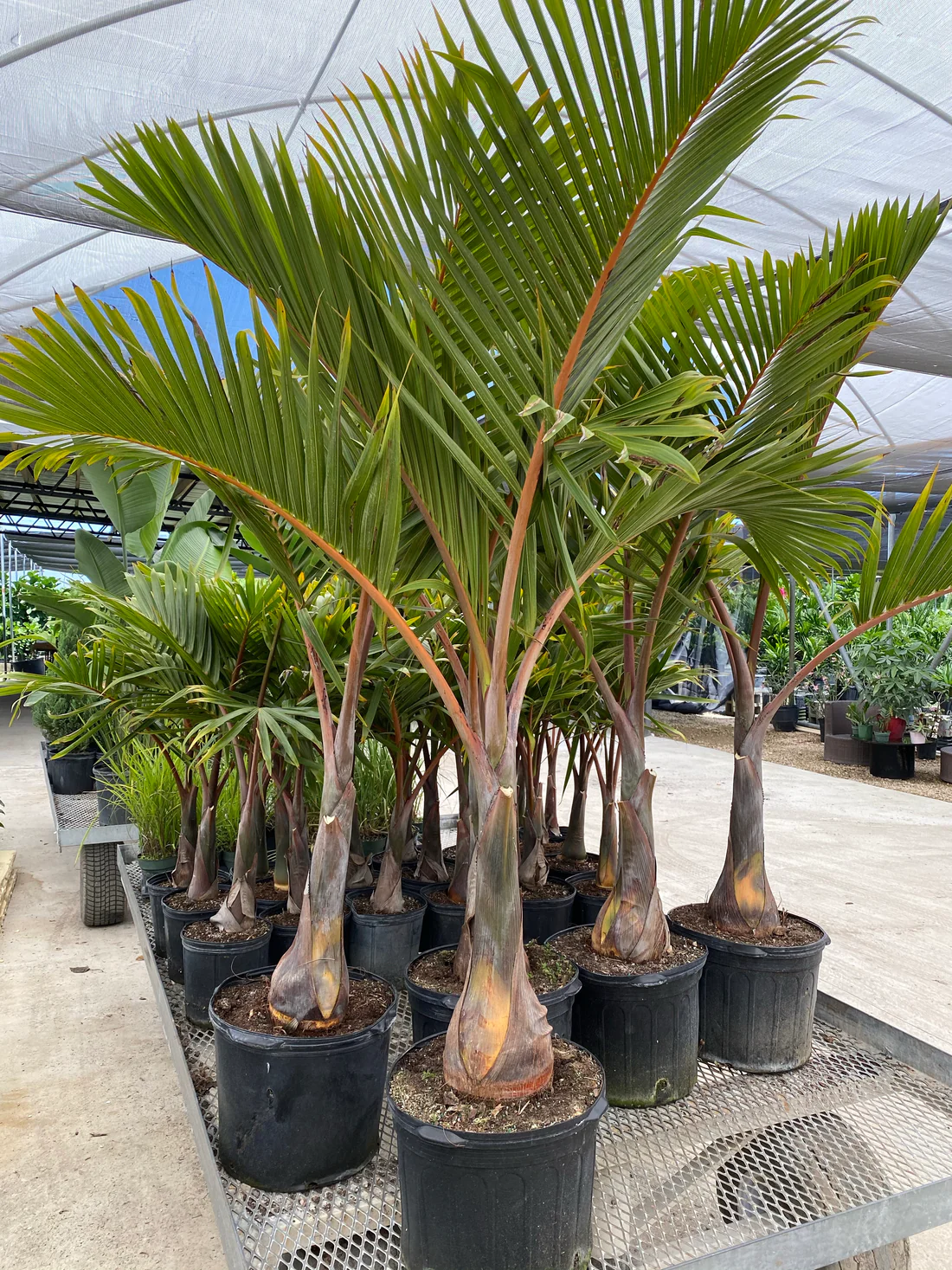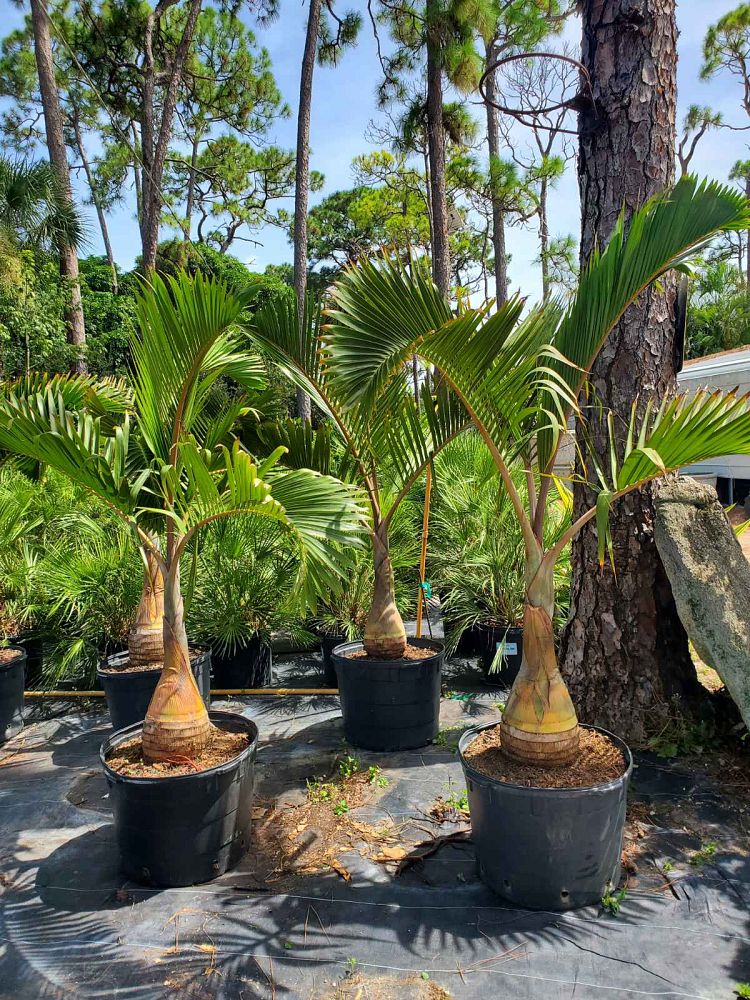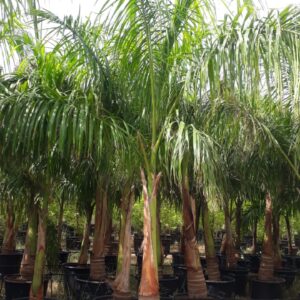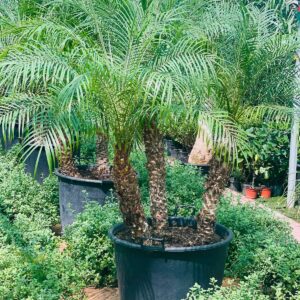Size: 1.5-2M
The Bottle Palm, scientifically named Hyophorbe lagenicaulis, belongs to the Arecaceae family and originates from the island of Mauritius in the Indian Ocean. This palm tree stands out for its unique and visually striking appearance, characterized by a bottle-shaped trunk that widens at the base and tapers towards the top.
Here are some key features and information about the Bottle Palm:
Appearance:
The Bottle Palm has a stout, swollen trunk that resembles a bottle in shape. The trunk can reach a height of around 10-12 feet (3-4 meters) and has a smooth, grayish-brown bark. The crown of the palm consists of about 8-10 arching, pinnate leaves. Each leaf is composed of numerous leaflets that are green and slightly curved.
Size:
The Bottle Palm is a relatively small palm tree compared to other palm species. It usually grows up to 10-12 feet (3-4 meters) in height, with a spread of about 6-8 feet (2-3 meters). Its compact size makes it suitable for smaller landscapes or as a potted plant.
Growth Rate:
The Bottle Palm is a slow-growing palm tree. It takes several years to reach its mature size, but its unique trunk shape and overall appearance make it an eye-catching addition to any garden or indoor space.
Light Requirements:
Bottle Palms thrive in full sun to partial shade. They require bright light to maintain their health and appearance. In indoor settings, place them near a sunny window or provide them with supplemental grow lights.
Temperature Tolerance:
Bottle Palms thrive in warm tropical or subtropical climates and can withstand temperatures as low as about 30°F (-1°C) for short periods. However, exposing the plant to cold temperatures for an extended period can cause damage or even death. In colder regions, it is advisable to cultivate Bottle Palms in containers, allowing for indoor relocation during winter or protection with suitable measures.
Soil Requirements:
These palm trees prefer well-draining soil. A mixture of sandy soil and organic matter is ideal. Good drainage is essential to prevent waterlogging, as excess moisture can lead to root rot.
Watering:
Bottle Palms have moderate water requirements. Water the plant thoroughly when the top inch (2.5 cm) of the soil feels dry. Avoid overwatering, as it can cause root rot. During winter or in cooler conditions, reduce the frequency of watering.
Maintenance:
Bottle Palms are generally low-maintenance once established. Remove any dead or damaged fronds to maintain a neat appearance. Fertilize with a balanced palm fertilizer according to the manufacturer’s instructions to promote healthy growth.
The Bottle Palm’s unique shape and relatively small size make it a popular choice for landscape accents, container gardening, or as an indoor plant. Its distinctive trunk and attractive foliage add a tropical touch to any setting.







Reviews
There are no reviews yet.